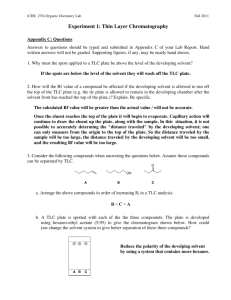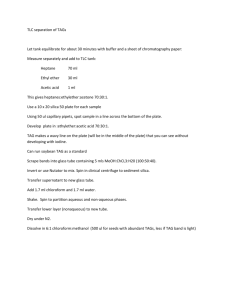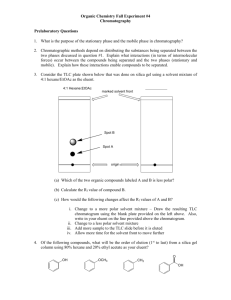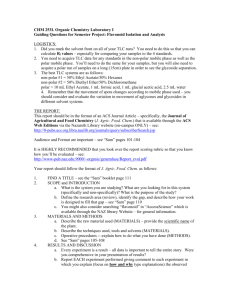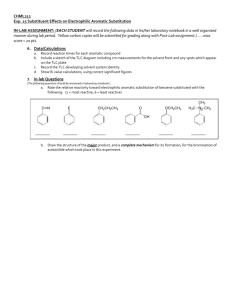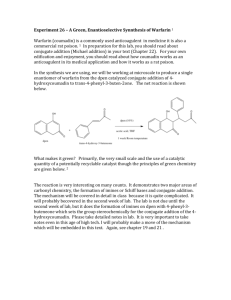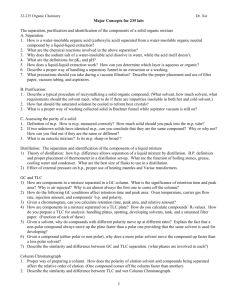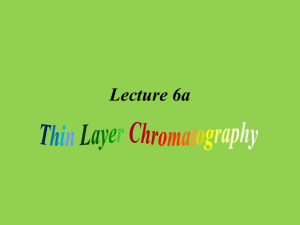بسم الله الرحمن الرحيم Organic chemistry lab Mr. Basem Qeshta Thin
advertisement
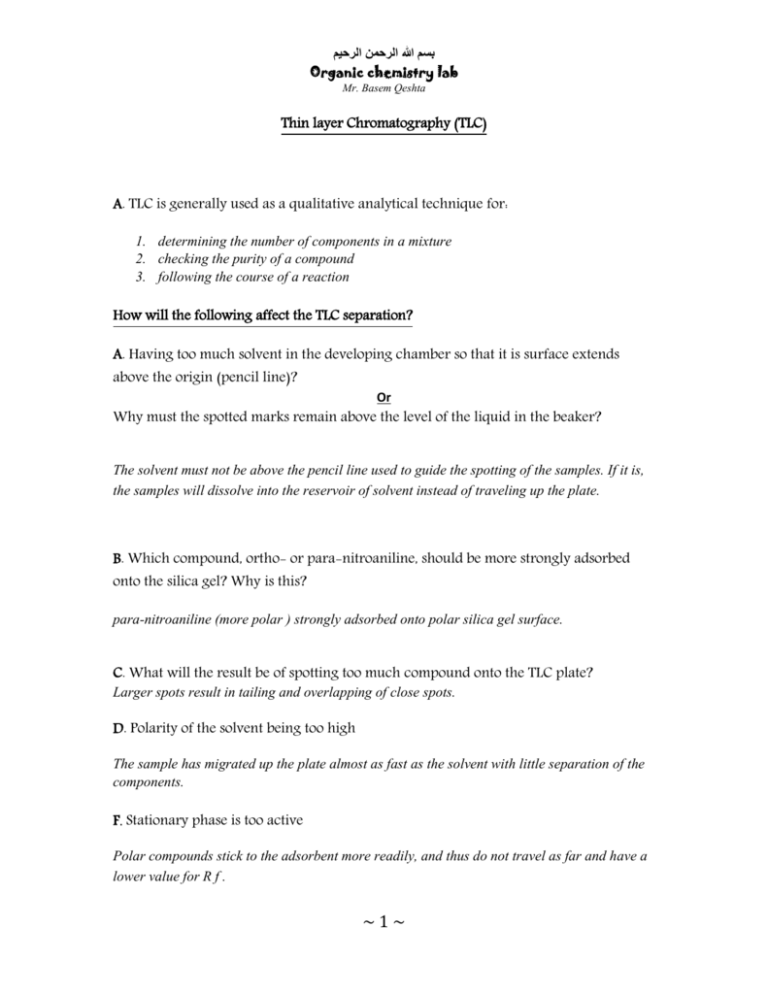
بسم هللا الرحمن الرحيم Organic chemistry lab Mr. Basem Qeshta Thin layer Chromatography (TLC) A. TLC is generally used as a qualitative analytical technique for: 1. determining the number of components in a mixture 2. checking the purity of a compound 3. following the course of a reaction How will the following affect the TLC separation? A. Having too much solvent in the developing chamber so that it is surface extends above the origin (pencil line)? Or Why must the spotted marks remain above the level of the liquid in the beaker? The solvent must not be above the pencil line used to guide the spotting of the samples. If it is, the samples will dissolve into the reservoir of solvent instead of traveling up the plate. B. Which compound, ortho- or para-nitroaniline, should be more strongly adsorbed onto the silica gel? Why is this? para-nitroaniline (more polar ) strongly adsorbed onto polar silica gel surface. C. What will the result be of spotting too much compound onto the TLC plate? Larger spots result in tailing and overlapping of close spots. D. Polarity of the solvent being too high The sample has migrated up the plate almost as fast as the solvent with little separation of the components. F. Stationary phase is too active Polar compounds stick to the adsorbent more readily, and thus do not travel as far and have a lower value for R f . ~1~ بسم هللا الرحمن الرحيم Organic chemistry lab Mr. Basem Qeshta 1) Consider the following silica gel TLC plate of compounds A, B, and C developed in hexanes a) Determine the R f values of compounds A, B, and C run on a silica gel TLC plate using hexanes as the solvent The distance between the origin and the solvent front: 2.75 cm. Then measure the distance between the origin and the center of spot A: 0.80 cm. R f for compound A is 0.80/2.75 = 0.29. R f for compound B is 2.20/2.75 = 0.80. The R f for compound C is 1.70/2.75 = 0.62. b) Which compound, A, B, or C, is the most polar? Compound A is the most polar because it does not travel as far as the other two compounds. Remember, polar compounds stick to the adsorbent more readily, and thus do not travel as far and have a lower value for R f . c) How would the R f values change if eluted with hexanes using an alumina TLC plate? Alumina is more polar than is Therefore, each of the compounds would travel slower on an alumina TLC plate than on a silica TLC plate, the R f values for each of the compounds would be smaller. ~2~ بسم هللا الرحمن الرحيم Organic chemistry lab Mr. Basem Qeshta 5) Consider a sample that is a mixture composed of biphenyl, benzoic acid, and benzyl alcohol. The sample is spotted on a TLC plate and developed in a hexanes/ethyl acetate solvent mixture. Predict the relative R f values for the three compounds in the sample Biphenyl is an unsaturated hydrocarbon, and therefore is the least polar and will have the largest R f value of the three compounds. The benzoic acid - an acid - would be the most polar and therefore will have the smallest Rf value. Benzyl alcohol is between these two compounds in polarity and will have an Rf value between the two. Which dye would be more soluble in n-propyl alcohol, the blue or the yellow? Blue dye more soluble than yellow dye in n-propyl alcohol and this was clear in paper chromatography experiment Why must you use a pencil not ink to mark the origin of the spots on the chromatography paper? ~3~

